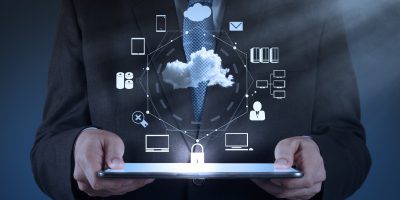
With edge computing, businesses will spend less money on maintaining cloud infrastructure. Source: Shutterstock
Edge computing is making the most out of the IoT explosion
MOVE OVER, cloud computing — edge computing is quickly coming into vogue as an alternative form of processing data, and as more Internet of Things (IoT) devices flood the market, the need for the close-contact computations of edge devices is becoming evident.
Edge computing can be a bit confusing to understand, but it’s essentially decentralizing computing operations by moving it away from the cloud and into smaller data centers near various data collection devices.
According to Tony Gaunt, a senior director of colocation, cloud and BFSI at communications services company Vertiv, edge computing is a way of optimizing cloud computing.
The “edge” in edge computing comes from the fact that these solutions allow data to be processed near the source of a network.
“A useful way to think about the edge would be like operating on the cloud except much quicker in terms of speed while not being connected to the web constantly,” Gaunt said in an email interview with Tech Wire Asia.
Edge computing is an incredibly useful form of computing as it bypasses the generally weak Internet infrastructure that is found all across Southeast Asia — with some notable exceptions — as it doesn’t rely on a steady connection in order to operate. Furthermore, edge computing is also able to help organizations streamline their information streams and analyze data in real-time.

Edge computing explained. Source: NTT SCL.
Devices do this by relying on “micro data centers”, which are self-contained and designed to ensure all information is churned inside a secure environment. This security aspect makes these devices especially effective for defending against the spread of malware and viruses.
Gaunt explained that there were a number of advantages that edge computing has over the cloud-based operations. Key to thinking about why a business should consider adopting this new form of computing lies in the fact that edge computing devices are stored very close to data sources — this cuts the resource and labor costs of transporting data between devices.
Enterprises will just spend less money on actually maintaining cloud infrastructure, or paying someone else to maintain it for them. Bandwidth use goes down, labor costs for someone to maintain the system vanish, and so do energy costs.
It’s also just much faster and effective for companies who want real-time data that is delivered quickly.
Gaunt explained that these tools will allow companies to stay ahead of the curve by deriving “actionable insights” straight from the devices themselves. Competition among businesses has become ever stiffer thanks to the rise of data and technology, so enterprises need every “edge” they can get.
“This is especially significant in gaming where a second of lag can mean the difference between a win or a lost or in autonomous cars where milliseconds can be a matter of life and death,” said Gaunt.
Furthermore, edge computing can solve the issue of cross-border dealings and corporations with multiple operational sites. The data is not like that stored in the cloud, where it depends on a third party ensuring the constant viability of the information — in fact, edge computing makes it easier for enterprises to access data anytime, anywhere.
The rise of IoT is a key reason why the adoption of edge computing has become imperative. According to a study by Gartner cited by Gaunt, an estimated 20.4 billion IoT devices will be in the hands of everyday people and businesses — everything from the systems that run the lights in your office, to how your water gets restocked depends on these connected “things”.
By 2020, there will be 20.4 billion IoT devices – @Gartner. Is your network ready for the IoT? https://t.co/EhiXhaW5Tv by @networkworld
— IoTInnovation (@IoTInnovation) August 17, 2017
The explosion of IoT devices is creating two issues: cloud computing just can’t keep up with demand and processing loads, while also simultaneously creating the need for more niche processing operations.
“Rather than relying on just one, centralized location to process the data, an edge computing set-up will split the overall workload to numerous machines,” Gaunt explained. The edge computer can be tailored, depending on each device, to deal with disparate kinds of information, meaning that processes are more insightful and more reliable.
However, edge computing cannot totally replace cloud computing — they’re both integral if the business is going to keep up with the increasing proliferation of technology and our rising reliance on data.
“Both complement each other and are adopted for different business reasons,” Gaunt said.
“For example, although edge computing can operate without cloud, it is only cost-effective for a company to connect their edge machines back to the cloud in order to send data and receive updates rather than manually updating each machine one by one.”
READ MORE
- The criticality of endpoint management in cybersecurity and operations
- Ethical AI: The renewed importance of safeguarding data and customer privacy in Generative AI applications
- How Japan balances AI-driven opportunities with cybersecurity needs
- Deploying SASE: Benchmarking your approach
- Insurance everywhere all at once: the digital transformation of the APAC insurance industry






